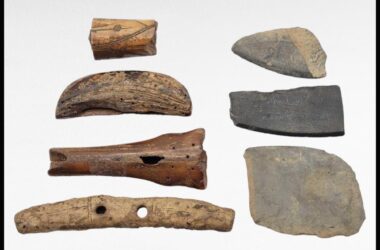Despite the monumental announcement this spring transferring majority control of Alaska’s $44 billion LNG project to Texas-based Glenfarne Group, state officials now confirm the deal brought no direct cash payment to Alaska.
In a recent radio interview on KSRM’s Sound Off hosted by Duane Bannock, Alaska Gasline Development Corporation (AGDC) President Frank Richards confirmed that the State of Alaska received no upfront compensation for its 75% stake in 8 Star Alaska—the new project entity formed to carry the Alaska LNG Project forward.
“There was no exchange of money,” Richards said during the interview. “What the state receives is essentially a company that will now take on the project leadership as well as the cost.”
That cost, expected to reach $150 million through final engineering and permitting, is now Glenfarne’s to bear as it pursues a final investment decision. But for many observers, the confirmation that Alaska gave away three-quarters of a state-backed megaproject—after investing more than $260 million in public funds over the past decade—is a surprising development.
The broader context of the deal had been framed as a “historic day for Alaska” when it was announced in March. State and national leaders praised Glenfarne’s takeover as the long-awaited answer to decades of failed attempts to commercialize North Slope gas. Glenfarne’s entry was lauded as a shift in momentum for the only federally permitted LNG export project on the U.S. Pacific Coast.
But the lack of financial return to the state—no lease, no sale price, and no immediate revenue—has raised serious questions about what Alaska actually received.
“It’s fair to say we gave away 75% of it,” Bannock asked Richards directly.
“That’s fair,” Richards replied.
The state does retain a 25% share and an option to invest further in the three core components: an 807-mile pipeline, a liquefaction facility in Nikiski, and a North Slope carbon capture system. Richards emphasized that the deal transfers future development costs to private hands, a move he said was necessary to keep the project alive.
But critics argue that the deal mirrors past disappointments, with Alaska once again shouldering massive sunk costs only to cede control when market realities set in.
Richards emphasized that the project has historically changed hands based on perceived viability, recalling that in 2016, the oil majors — ExxonMobil, BP, and ConocoPhillips — turned over full control to the state without compensation. “They gave it away,” Richards said. He added that just because something is handed off doesn’t mean it has no future worth. “AGDC retains ownership rights — and that’s where the value lies, in the long-term upside.”
Critics argue that Alaska should have received something tangible in return after $260 million in state appropriations and more than a decade of work. Richards responded by noting that much of that money was originally earmarked under AGIA — the Palin-era agreement that paid TransCanada $500 million to develop pipeline concepts. “TransCanada and ExxonMobil were paid all their bills, and all of their work product came to AGDC.”
Richards pushed back against the framing that the Glenfarne deal was a fire sale. “This isn’t about a quick payout — it’s about bringing back private-sector dollars and leadership,” he said. “That’s what allows us to move the project forward, through final design and into a final investment decision.”
The Alaska LNG Project has long been viewed as transformational. It promises to deliver up to 20 million metric tonnes of LNG annually, create over 10,000 construction jobs, and provide long-term gas supply to both Alaska communities and overseas markets. Yet the state’s path to this point has been paved with shelved agreements, foreign partnerships that never materialized, and hundreds of millions in public spending.
While Glenfarne has a strong global portfolio—including LNG terminals in Texas and Colombia—the road ahead for Alaska LNG remains long and uncertain. Glenfarne must still finalize engineering, secure buyers, raise capital, and reach a final investment decision before construction begins.






